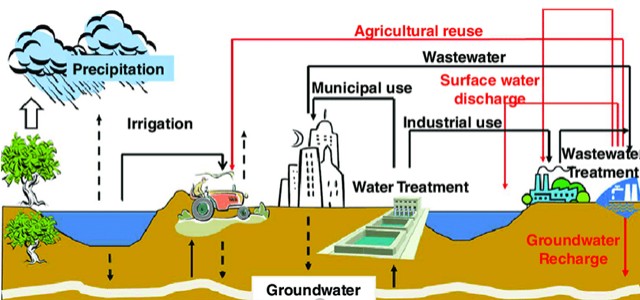Science has done a great job in translating different phenomena into accessible and useful information to understand our natural surroundings. It has also done good in predicting, with some uncertainty, what future conditions can be like. However, as accurate as it can be, its role of predicting future weather conditions have turned into a more challenging task thanks to climate change.
The climate crisis showed us that mathematical modelling of the natural world and its phenomena can fall short as far as prediction concerns. Uncertain predictions are an indicator of the need to find alternative ways to respond to the infinite future scenarios, especially when it comes to water in a world of growing population.
Planning our water management systems to make them as flexible as possible, can be considered as one way to be prepared for future challenges. In this context, flexibility can be seen as integrating as many sources as there are available into the plan, in order to enhance the reliability of our water supply in the changing climate conditions & legislative restriction. But also, this strategy for planning allows us to choose the most adequate management alternatives for the long run. This is what a long-term water management plan is about.
This is nothing more than a strategy that considers:
It brings together expert and multidisciplinary knowledge to guide and implement the management of water to be beneficial to the environment, the organization and the human needs over the long term[1]. In other words, long-term water management plans are capable of building climate-proof water systems by assessing the resources’ potential to cover demand needs.
This strategy takes into account the differences between the sources and the final water application, and assesses whether the supply is able to respond to the typical needs of each case. Water intended for farm use differs from that directed to the industrial sector, and at the same time these two differ from domestic needs or human consumption. Thus, differentiating water sources from each other to cover specific needs can lead to smart solutions.
So, a long-term management plan allows to visualize the future water demand and assess the flexibility of adapting to the variability of the conditions, according to the modifications occurring in the area. But also, this strategy allows to design and implement water saving measures according to water demand, water quality and resource availability, leading to avoid or alleviate overconsumption in the long term.
For these aforementioned reasons, the plan must be kept up to date considering modifications in societal and internal aspects, such as[3]:
Technology has brought us the possibility of counting on several water sources, such as ground water, city water, rain water, river water, seawater and even wastewater. Using wastewater as alternative water source helps to close loops as means to reduce our dependence on fresh water sources, while at the same time reinforcing source reliability.
Wastewater reuse is a reality today and can be accounted for as a stable, readily available source. This is due to the simple reason that as long as there is wastewater coming from any activity, there will be a source of water to rely on, as shown by the cycles of Figure 3.

However, the field of wastewater reuse is still facing public acceptance challenges in different parts of the world. For this reason, a correct communication of the benefits of advanced technology for water reuse and wastewater treatment is vital.
Nowadays, advanced water treatment technologies such as membrane technology, electrochemical systems, adsorption processes (resins, activated carbon,…), UV light disinfection and ozone treatment, are capable of removing conventional and non-conventional, biological and chemical water pollutants to adjust water quality up to the requirements of the most demanding use: human consumption. This fact allows us to count on wastewater just as in any other of the sources shown in Figure 1 and bring it to the same quality of that coming from glaciers or virgin water sources.
In BOSAQ and Water Experts we give water the importance it deserves as the essential resource it is for life on the planet. We close water loops by relying on our expert knowledge, to include waste streams as part of long-term water management plans. We ensure high-quality and a stable water supply to cover the needs of your specific demand and supply purpose.
[1] NSW Government, ‘Long-term water plans’, NSW Environment, Energy and Science. http://www.environment.nsw.gov.au/topics/water/water-for-the-environment/planning-and-reporting/long-term-water-plans (accessed Feb. 10, 2021).
[2] Canadian Agricultural Partnership, ‘Long-term water management plan’. Accessed: Feb. 09, 2021. [Online]. Available: https://cap.alberta.ca/CAP/download/AGUCMINT-2623537.
[3] Coachella Valley Water District, ‘Coachella Valley Water Management Plan Update’. Jan. 2012, Accessed: Feb. 09, 2021. [Online]. Available: https://www.cvwd.org/282/Long-Term-Water-Management.